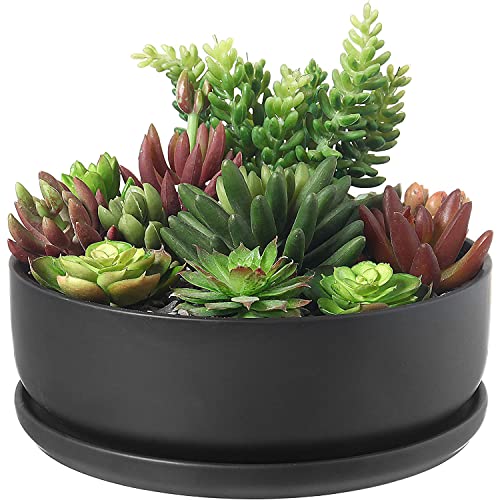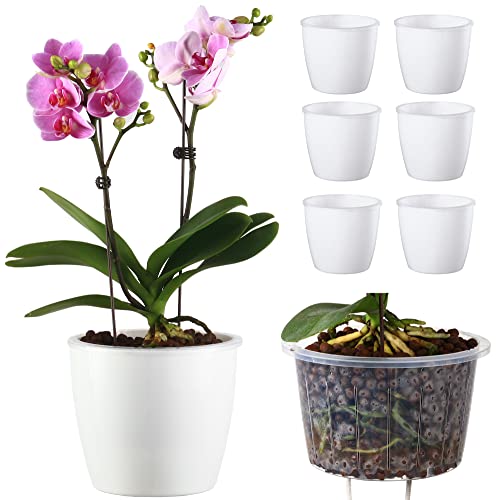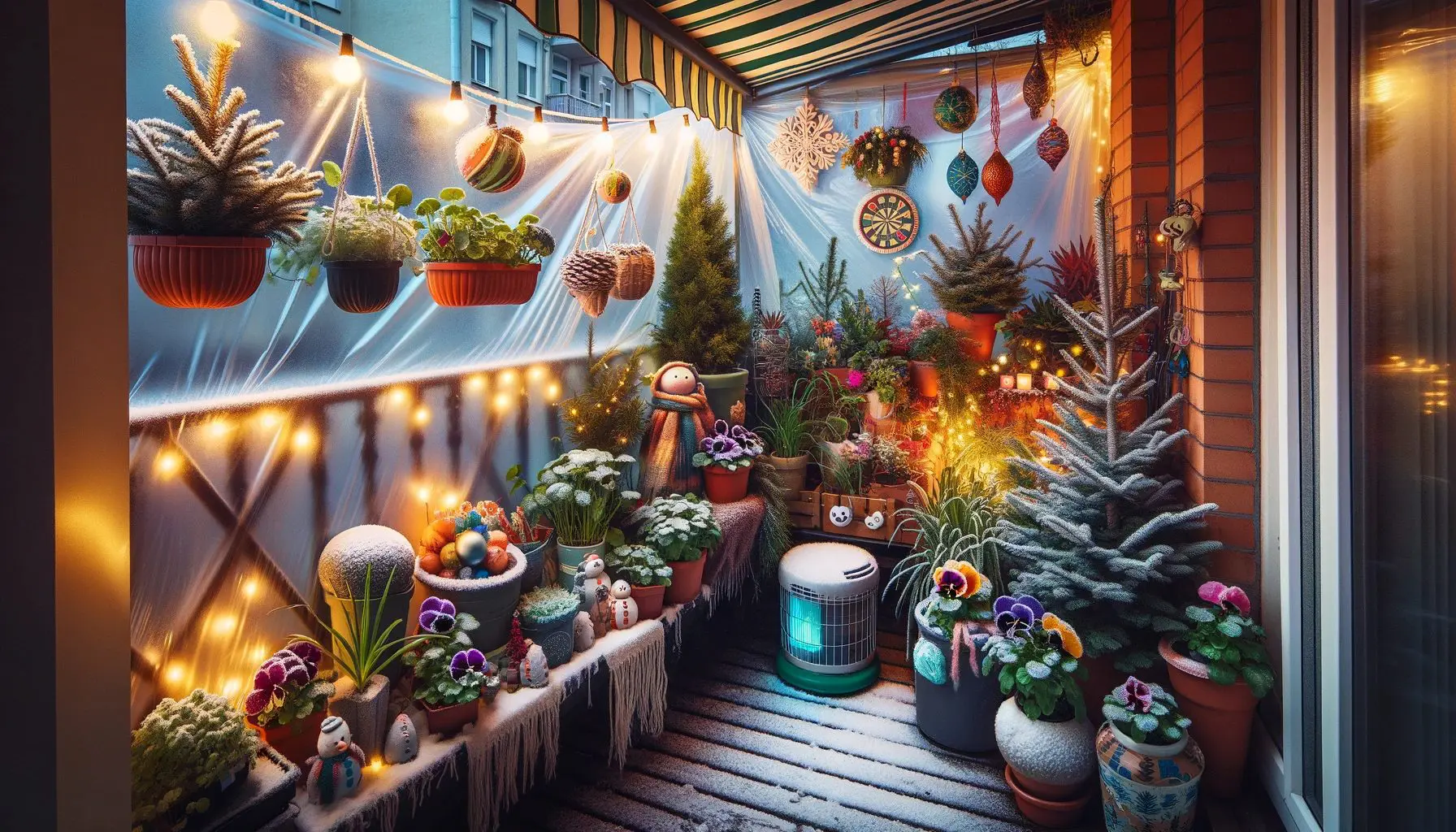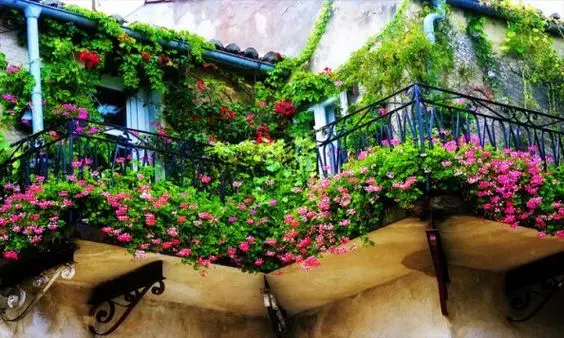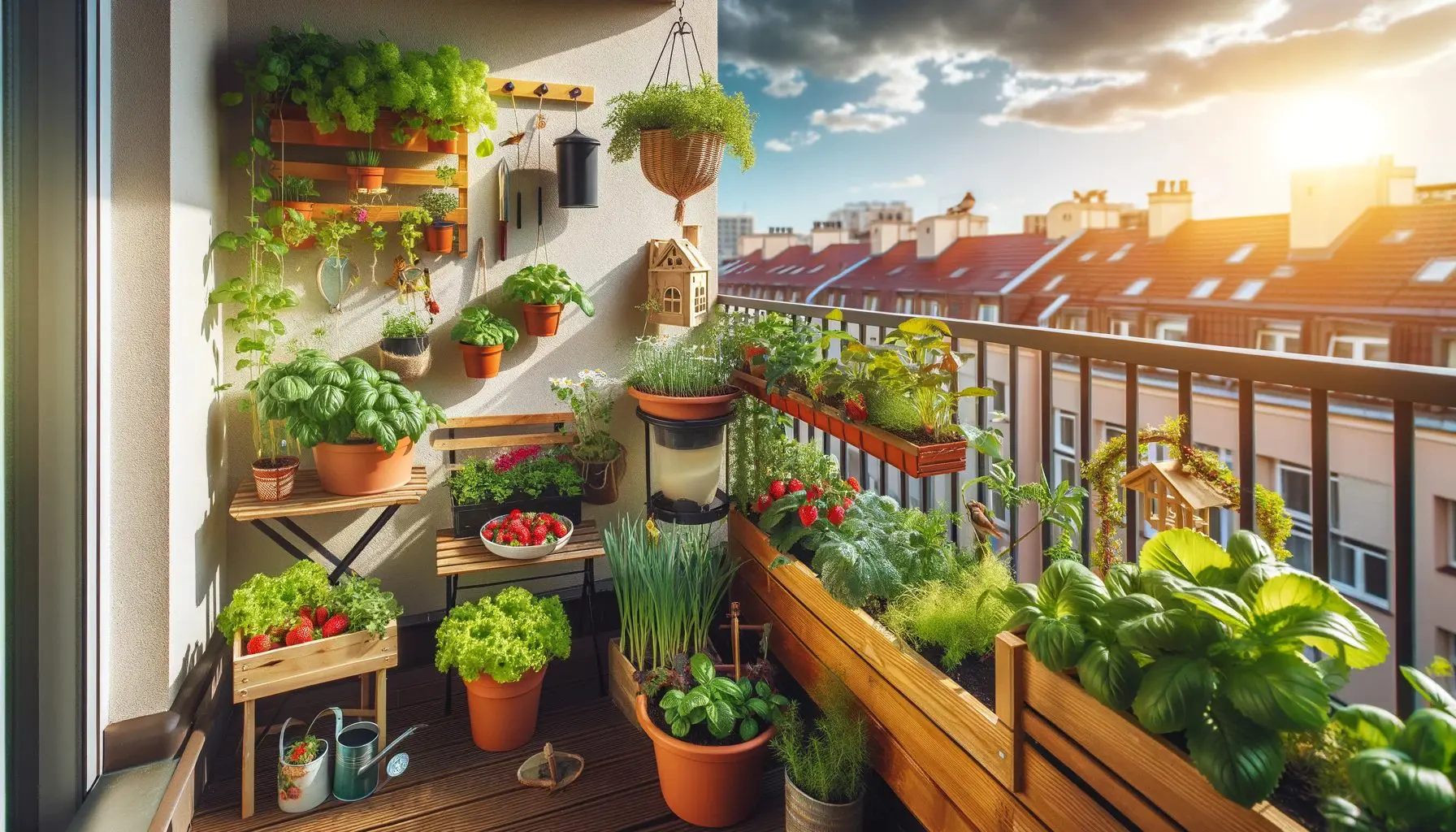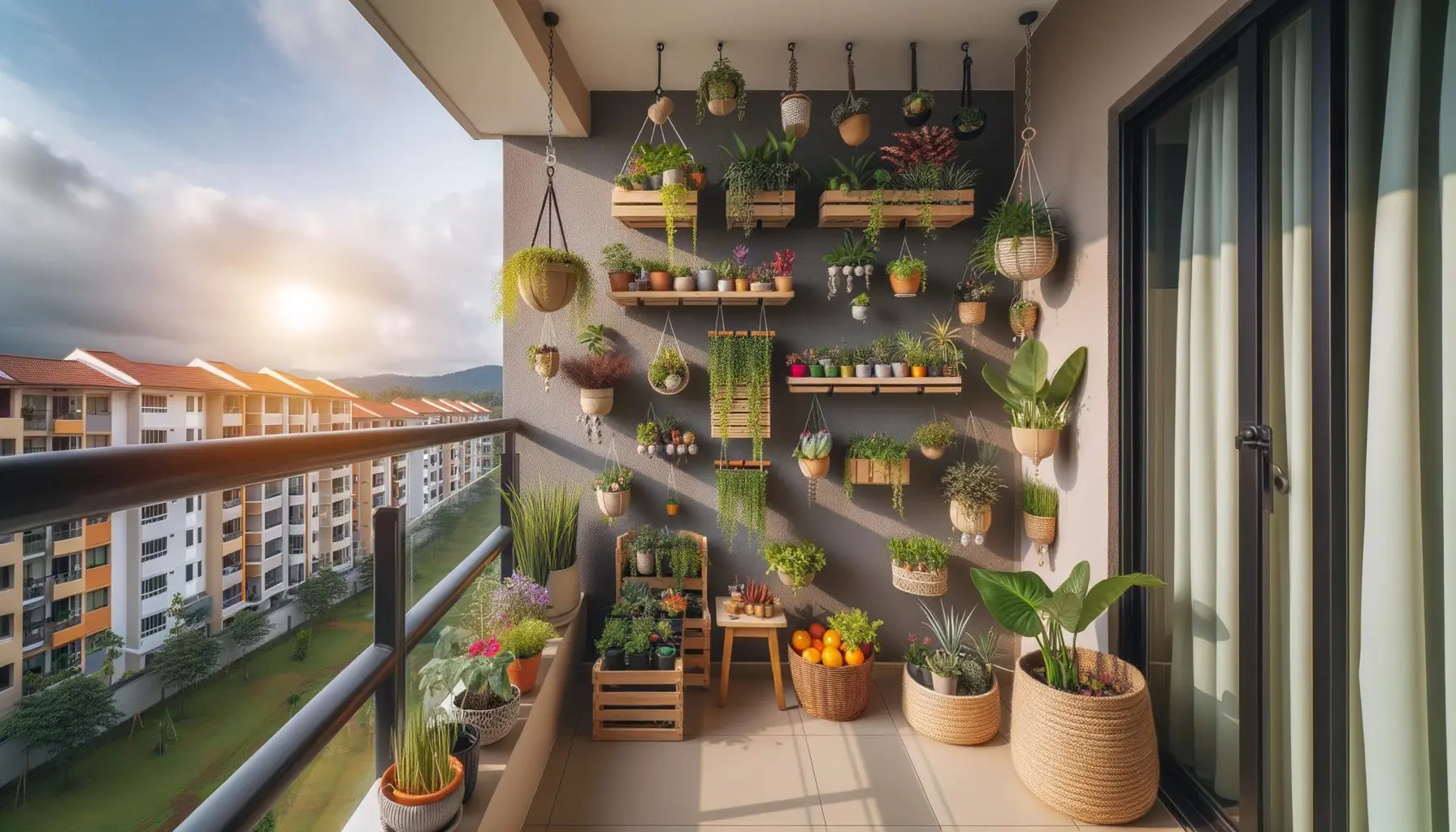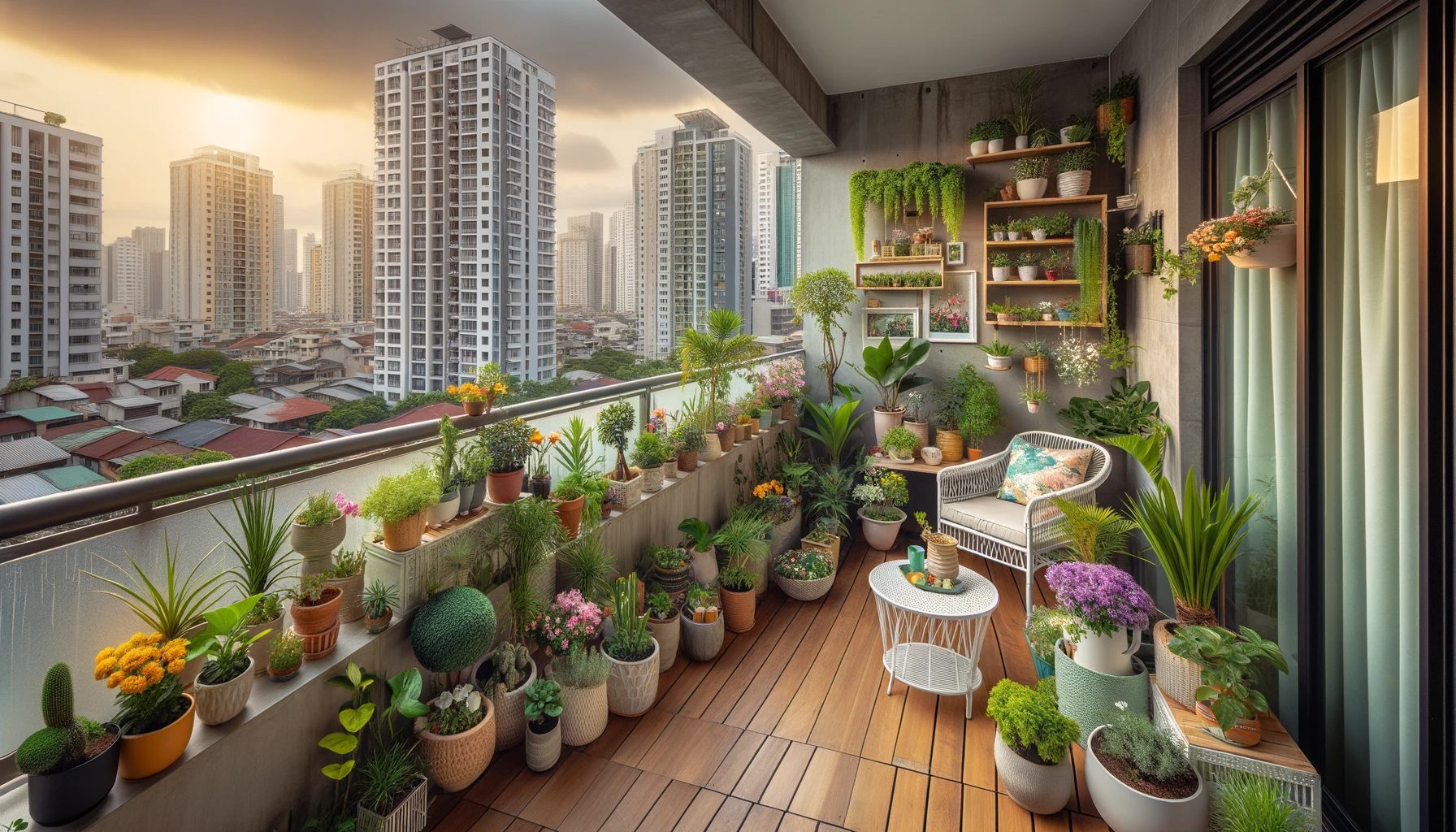This post contains affiliate links. If you buy something from one of our links we may earn a commission. Thanks
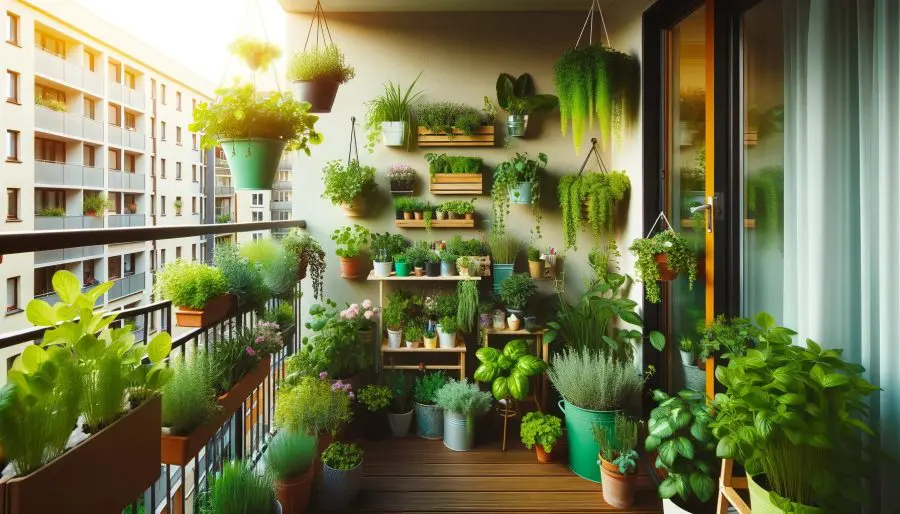 Discover the joys of starting an apartment balcony garden! Our guide offers easy tips to transform your small space into a lush, green retreat. Dive in now!
Discover the joys of starting an apartment balcony garden! Our guide offers easy tips to transform your small space into a lush, green retreat. Dive in now!
Balcony gardening offers a unique opportunity to transform limited spaces into lush, green oases.
You can even garden in a small space with apartment balcony container gardening.
Whether you’re in a high-rise apartment or a cozy condo, you can cultivate a beautiful array of plants right on your balcony.
This guide will walk you through the essentials of setting up your balcony garden, and give you balcony garden ideas from assessing your space to selecting the perfect plants.
Starting a Balcony Garden Key Takeaways:
- Starting an apartment balcony garden involves assessing your balcony for space, light, and weight capacity.
- Choosing suitable plants and containers that fit these conditions.
- Use vertical space creatively for more greenery and ensure proper watering and maintenance.
- It’s a great way to bring nature into your urban living space.
Starting an Apartment Balcony Garden
Are you dreaming of green spaces but limited by apartment living? Starting an apartment balcony garden is your solution!
This fun and fulfilling journey turns any small balcony into a vibrant oasis of plants and flowers.
Let’s dig into how you can create your very own garden paradise, no matter the size of your space!
What We Will Cover
Here are some topics and tips for a balcony garden I will be sharing:
- Understanding your balcony’s limitations and potential.
- Choosing the right plants for your space and environment.
- Innovative ways to maximize small spaces through vertical gardening.
- Practical tips for effective watering and maintenance.
Why you need a balcony garden
Just because you don’t have a backyard doesn’t mean a garden is an impossibility. And with many of us spending more time at home, there has never been a better time to start one.
There are plenty of benefits to gardening, aside from being a fun hobby, says UNSW Built Environment Associate Professor Paul Osmond, head of the sustainable built environment program.
Part 1: Setting Up Your Balcony Garden
Assessing Balcony Conditions
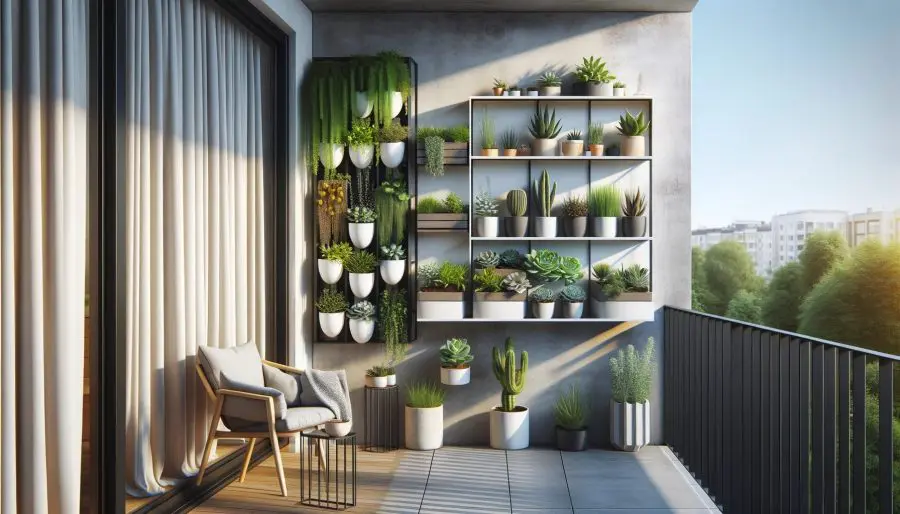
Before you embark on your gardening journey, it’s crucial to understand your balcony’s specific conditions.
This initial assessment is more than just a practicality; it’s about laying the groundwork for a flourishing garden that complements your living space and lifestyle.
Here are the key factors you need to consider:
Space Analysis:
Begin by measuring your balcony to get a clear idea of the available area.
Understand how much space you can dedicate to gardening without overcrowding the area or obstructing movement.
Consider not only the floor space but also how you can utilize vertical space with wall planters or hanging pots.
Structural Integrity and Weight Limits:
It’s essential to know how much weight your balcony can safely support.
This includes the weight of pots, soil, plants, and any additional gardening accessories.
Overloading can pose a safety risk, so if in doubt, consult with your building management.
Sunlight and Exposure:
The amount of sunlight your balcony receives directly influences the types of plants that will thrive.
Observe the pattern of sunlight throughout the day. Does your balcony get full sun, partial shade, or full shade?
This will determine whether you can grow sun-loving plants like tomatoes and roses or shade-tolerant plants like ferns and hostas.
Wind and Weather Conditions:
High-rise apartments often experience stronger winds that can affect plant growth and stability.
Consider wind-resistant plants or installing windbreaks if necessary.
Consider winter gardening. What plants can stand colder temperatures and what plants are tender?
Additionally, take note of how rain and other weather conditions impact your balcony.
Building Regulations and Restrictions:
It’s important to be aware of any building rules or regulations regarding balcony usage.
Some buildings have specific guidelines on what can be grown, the types of containers allowed, or even restrictions on water usage.
Accessibility for Maintenance:
Consider how easily you can access your balcony for regular maintenance. This includes watering, pruning, and general care.
If your balcony is not easily accessible, you may need to think about installing a watering system or choosing low-maintenance plants.
Privacy and Aesthetic Considerations:
Your balcony garden is an extension of your home. Think about how it will look from both inside and outside.
You might want to use plants to enhance privacy or choose a color scheme that complements your exterior décor.
By carefully assessing these conditions, you can create a balcony garden that is not only beautiful and productive but also safe and sustainable.
This preparation phase is your first step towards transforming your balcony into a delightful green space that enhances your urban living experience.
Choosing the Right Plants
Choosing the right plants for your balcony garden is more than just picking your favorites.
It’s about understanding your balcony’s microclimate and selecting plants that will not only survive but thrive in those specific conditions.
Sunlight and Orientation
The amount of sunlight your balcony receives is perhaps the most crucial factor to consider.
Here’s how you can choose plants based on the orientation of your balcony:
- South-Facing Balconies: These are sun-drenched spaces that are ideal for a wide range of plants. Sun-loving plants like cacti, most vegetables (think tomatoes, peppers, and eggplants), and flowering plants like marigolds and geraniums will do well here. These plants typically need around 6-8 hours of direct sunlight to flourish.
- North-Facing or Shaded Balconies: If your balcony is shaded or receives limited sunlight, opt for plants that thrive in lower light conditions. Shade-loving plants such as ferns, coleus, and impatiens are excellent choices. These plants can bring color and life to your balcony without the need for intense sunlight.
Resilient Plants for Low-Maintenance Gardening
If you’re looking for a garden that’s easy to care for, consider these resilient plants:
- Coneflowers (Echinacea): These hardy perennials bring vibrant colors and are known for their ability to withstand challenging conditions.

- Yucca: With its striking appearance, yucca is not only resilient but also adds an architectural element to your garden.

- Petunias: For a pop of color, petunias are a great choice. They are low-maintenance and can bloom abundantly throughout the season.

- Succulents: If you’re new to gardening or have a busy schedule, succulents are ideal. They require minimal care and can tolerate periods of neglect.

Tailoring to Your Taste and Lifestyle
Your plant choices should also reflect your personal style and how you intend to use your balcony space. Consider the following:
- Edible Plants: If you love cooking, consider growing herbs like basil, thyme, and rosemary. They are not only practical but also add a fresh aroma to your balcony.

- Color and Texture: Think about the visual appeal of your garden. Combine plants with different colors, textures, and heights to create a visually interesting space.
- Seasonal Changes: Some plants are annuals, while others are perennials. Consider how the look of your garden might change with the seasons and plan accordingly.
Environmental Considerations
Finally, consider the environmental impact of your plant choices.
Opt for native plants when possible, as they are adapted to your local climate and support local biodiversity.
They often require less water and are more resistant to local pests and diseases.
Vertical and Creative Gardening Solutions
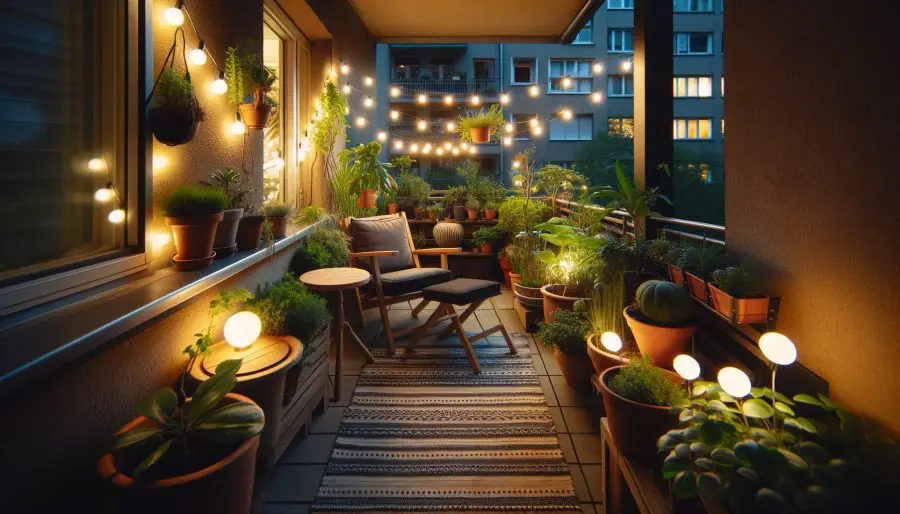
Maximizing space is essential in balcony gardening, especially when working with limited areas.
Vertical gardening is not just a practical solution to space constraints; it’s also a way to add visual interest and create a unique and engaging garden environment.
Here are some ways to incorporate vertical and creative gardening solutions:
Vertical Planters
Vertical gardening is a game-changer for small balconies. Here’s how you can implement it:
- Wall Planters: These are great for growing a variety of plants without using any floor space. Consider a mix of ornamental plants, herbs, and even small vegetables. Wall planters can also be used to create a living wall, which acts as a natural air purifier and visual focal point.

- Hanging Baskets: Ideal for trailing plants like ivy, petunias, or even some varieties of tomatoes. Hanging baskets add a charming and whimsical touch to your balcony and can be hung from the ceiling, wall brackets, or railing edges.

- Railing Planters: Make the most of your railing by attaching planters directly to them. They’re perfect for growing herbs, flowers, or small greens, and they keep your floor space clear.

Shelving Units
Shelves are not just functional; they can be a significant aesthetic addition to your balcony garden:
- Installing Shelves: By installing shelves along the walls of your balcony, you can create multiple levels for your plants. This not only makes your space look larger but also more organized. You can use shelves to create a tiered garden effect, which is visually appealing and practical.
- Decorative and Functional Shelves: Choose shelves that complement the overall look of your balcony. Wood shelves can add a warm, rustic feel, while metal or glass shelves can lend a more modern look. Consider adjustable shelves for flexibility in arranging plants of different heights.
- Creative Shelving Ideas: Use unconventional items for shelving like repurposed ladders, pallets, or even old furniture pieces. These can add character and uniqueness to your balcony garden.
Innovative Vertical Solutions
There are other creative ways to maximize vertical space:
- Trellises and Climbing Plants: Install trellises against a wall or railing for climbing plants like jasmine, ivy, or even certain vegetables like cucumbers. This creates a lush, green backdrop and can also provide some privacy.
- Stackable Planters: These are specially designed to stack on top of each other, forming a vertical tower of plants. They’re perfect for growing herbs, strawberries, and other small plants.
- Hanging Pockets and Fabric Planters: Use hanging fabric planters or pockets for a unique twist. They’re great for growing small herbs and can be hung on walls or from the ceiling.

By incorporating these vertical and creative gardening solutions, you can turn even the smallest balcony into a flourishing garden.
Not only do they help you make the most of your available space, but they also add layers of interest and beauty to your outdoor area, making it a delightful place to relax and enjoy nature.
Watering and Maintenance Strategies
Maintaining a balcony garden requires a balance of regular care and smart strategies.
While these gardens offer the joy and beauty of green space, they also demand consistent attention, particularly in terms of watering and general upkeep.
Here’s how you can manage these aspects effectively:
Innovative Watering Solutions
Efficient watering is key to keeping your balcony garden lush and healthy:
- Self-Watering Pots: These pots have a built-in reservoir that allows plants to absorb water as needed, which is particularly useful for busy gardeners or during hot weather. They help in maintaining consistent moisture levels, reducing the risk of both over and under-watering.

- Drip Irrigation Systems: Installing a drip irrigation system can be a game-changer, especially for larger balcony gardens. These systems deliver water directly to the roots of your plants at preset intervals, ensuring that each plant receives the exact amount of water it needs. This not only saves water but also time and effort in manual watering.

- Watering Globes and Spikes: For a more decorative approach, consider using watering globes or spikes. They release water slowly into the soil and can be a great addition to ensure your plants stay hydrated, especially if you are away for a few days.
![[2 PCS] Light Iridescent Rainbow Gradient Color Clear Glass Self-Watering System Spikes, Aqua Globes Automatic Plant Waterer Bulbs [2 PCS] Light Iridescent Rainbow Gradient Color Clear Glass Self-Watering System Spikes, Aqua Globes Automatic Plant Waterer Bulbs](data:image/gif;base64,R0lGODlhAQABAAAAACH5BAEKAAEALAAAAAABAAEAAAICTAEAOw==)
Consistent Care and Maintenance
Regular care is crucial for the health and vitality of your balcony plants:
- Regular Watering: Container plants typically dry out faster than those in the ground, so they may need to be watered more frequently. Check the soil moisture regularly and water when necessary. Be mindful of the water needs of different plants; some may require more frequent watering than others.
- Fertilizing: Balcony plants also benefit from regular feeding, especially during their growing season. Use a balanced, water-soluble fertilizer to provide essential nutrients. Organic options like compost tea can also be effective and sustainable.
- Pruning and Deadheading: Regularly prune dead or overgrown branches and leaves to encourage healthy growth and flowering. Deadheading spent flowers will promote more blooms and keep your plants looking tidy.
- Pest and Disease Management: Keep an eye out for signs of pests or diseases. Early detection and treatment are key to preventing them from spreading. Using organic and environmentally friendly pest control methods can be effective and safe for balcony settings.
- Seasonal Adjustments: Adjust your care routine with the changing seasons. Plants may require less water in cooler months, and some may need to be brought indoors or protected during harsh weather conditions.
By implementing these watering and maintenance strategies, you can ensure that your balcony garden remains a vibrant and healthy extension of your living space.
Regular care not only keeps your plants thriving but also deepens your connection with your garden, making it a more rewarding and enjoyable experience.
Budgeting and Resource Utilization
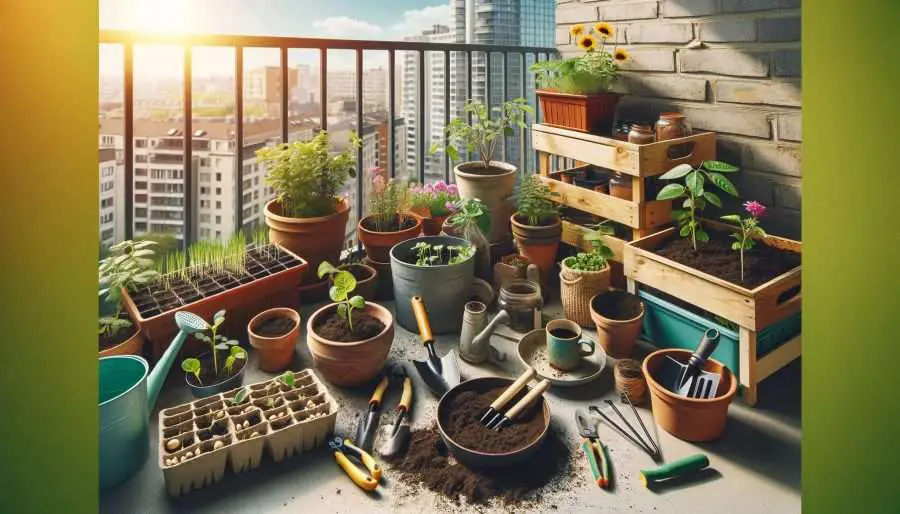
Embarking on the journey of balcony gardening can be a delightful experience that doesn’t necessarily require a hefty investment.
With strategic planning and a bit of creativity, you can create a beautiful garden while staying within your budget.
Here are some tips to maximize your resources effectively:
DIY Containers
The world of DIY offers endless possibilities to save money and add a personal touch to your balcony garden:
- Repurposing Everyday Items: Look around your home for items that can be transformed into plant containers. Old coffee tins, plastic buckets, wooden crates, or even worn-out boots can become unique planters. Just make sure to add drainage holes.
- Yard Sales and Thrift Stores: These are treasure troves for finding gardening containers at a fraction of the cost. Keep an eye out for pots, plant stands, and even old gardening tools.
- Upcycling Projects: Upcycling not only saves money but also contributes to sustainability. Turn broken furniture into plant stands or use old kitchenware as quirky planters.
Quality Soil: A Worthwhile Investment
While saving on containers, don’t skimp invest in quality potting soil:
Potting Soil vs. Garden Soil:
Choose a good-quality potting mix specifically designed for container plants. It’s lighter and provides better drainage and aeration than regular garden soil.
Don’t use garden soil it may contain bugs or diseases and it will compact heavily in containers.
Making Your Own Mix: You can also create your own potting mix by combining peat moss, perlite, and compost.
Consider a more environmentally sustainable choice by using coco coir instead of peat moss.
This can be more cost-effective and allows you to tailor the soil to your plants’ needs.
Space Optimization
Maximizing your balcony space is crucial, especially when working with limited areas:
- Vertical Gardening: As mentioned earlier, vertical gardening is an excellent way to use space efficiently. Utilize wall space and railings to grow more plants without crowding your balcony.
- Multi-Purpose Furniture: Choose furniture that can double as storage or plant stands. A bench with storage underneath, for example, can hold gardening tools or even extra pots.

- Balcony Layout: Plan your balcony layout strategically. Group plants with similar water and sunlight needs together. Use hanging planters and wall-mounted shelves to keep the floor space open.
Seasonal and Long-Term Planning
Consider the long-term sustainability of your garden:
- Perennials vs. Annuals: Perennials may be more expensive initially but are a long-term investment as they come back every year, whereas annuals need to be replaced each season.
- Seed Starting: Growing plants from seeds is often more economical than buying mature plants. It also allows you to grow a wider variety of plants.
Balcony gardening on a budget is entirely feasible and can be incredibly rewarding.
By being resourceful and creative, you can build a lush, green space that reflects your personality and brings joy without breaking the bank.
In the next part of this article, we will explore ways to enhance your balcony garden, focusing on aesthetic improvements, garden varieties, overcoming challenges, and sustainable practices.
Stay tuned for more tips on creating your dream balcony garden.
In the first part of this guide, we covered the basics of setting up your balcony garden. Now, let’s delve into ways to enhance your garden, making it not only a source of greenery but also a delightful extension of your living space.
Part 2: Enhancing Your Balcony Garden
Privacy and Aesthetic Enhancements
Creating a private, aesthetically pleasing space is crucial for enjoying your balcony garden to the fullest.
Creating a private and aesthetically pleasing space is an essential aspect of balcony gardening.
It enhances the enjoyment of your outdoor area, turning it into a personal retreat amidst the urban landscape.
Here’s how you can achieve both privacy and beauty in your balcony garden:
Natural Privacy Screens
Privacy is a cherished commodity in apartment living. Here are some ways to use plants as natural screens:
- Climbing Plants: Fast-growing climbers like ivy, honeysuckle, jasmine, or even grapevines can create a lush, living wall that offers both privacy and a green aesthetic. Install trellises or wires for these plants to climb on, and enjoy the dual benefits of privacy and beauty.

- Tall Plants and Shrubs: Consider taller plants or shrubs in containers to form a natural barrier. Bamboo, tall grasses, or even small trees in large pots can act as a screen while adding an element of nature to your balcony.

- Dense Foliage Plants: Plants with dense foliage like laurel or boxwood can be pruned into neat hedges, offering a structured yet natural privacy solution.

Decorative Containers
The choice of containers can significantly influence the look and feel of your balcony garden:
- Upcycled Containers: Add character to your garden with creatively upcycled containers. Old barrels, colorful tins, or even repurposed furniture can be turned into unique planters.
- Cohesive Color Scheme: Select containers that complement each other and your overall balcony decor. A cohesive color scheme can unify the space and make it look more organized and stylish.
- Varied Sizes and Heights: Use containers of different sizes and heights to create visual interest. Layering plants at different levels can add depth and dimension to your garden.
Aesthetic Touches
Small details can make a big difference in the overall ambiance of your balcony garden:
- Lighting: Soft lighting can transform your balcony garden into a magical evening retreat. String lights, lanterns, or solar-powered lamps can add a warm and inviting glow.

- Accessorizing: Decorative elements like garden statues, wind chimes, or a small water feature can personalize your space and add charm.
- Seating and Soft Furnishings: A comfortable seating area with cushions and throws can make your balcony garden an ideal spot for relaxation or entertaining. Choose weather-resistant fabrics in colors and patterns that complement your plant palette.
Balancing Function and Beauty
Remember to balance aesthetics with practicality:
- Easy-to-Maintain: Choose decorative elements that are easy to maintain and suitable for outdoor conditions.
- Space Utilization: While enhancing the beauty of your balcony, ensure that you don’t overcrowd the space. Leave room to move around and enjoy your garden comfortably.
By focusing on privacy and aesthetic enhancements, your balcony garden can become a beautiful, serene, and private space that offers an escape from the hustle and bustle of daily life.
With these tips, you can create a balcony garden that is not just a collection of plants but a thoughtfully designed extension of your home.
Part 3: Choosing Balcony Plants
Balcony Garden Varieties
Your balcony garden can be a vibrant tapestry of varied plants, each bringing its unique charm and function.
Whether you have a sprawling terrace or a cozy nook, there’s a plethora of gardening options to explore.
Succulent Bowls
Succulent bowls are a perfect choice for small balconies and busy gardeners:
- Easy Care and Diverse Options: Succulents are renowned for their low maintenance needs. They come in an array of shapes, sizes, and colors, allowing for creative and diverse compositions.
- Designing Your Bowl: Start with a shallow, wide bowl. Mix and match different succulents for varied textures and colors. Arrange taller species in the center, with cascading varieties along the edge for a dynamic display.
- Care Tips: Place your succulent bowl in a sunny spot. Water sparingly – the key is to let the soil dry out completely between waterings.
Herb Gardens
Herb gardens are a delightful addition to any balcony, offering both culinary and aromatic benefits:
- Selection of Herbs: Choose herbs that you frequently use in cooking for a practical garden. Popular choices include basil, thyme, rosemary, and sage. These herbs not only provide fresh ingredients for your dishes but also emit a pleasant fragrance.
- Container Choices: Herbs can be grown in individual pots or together in larger containers. Consider using tiered planters to save space and create an attractive display.
- Growing Conditions: Most herbs thrive in full sun but can also tolerate partial shade. Ensure good drainage in your pots and water regularly for lush growth.
Additional Balcony Garden Varieties
Expand your gardening horizons with these additional options:
- Edible Plants: If you have enough sunlight, you can grow a variety of vegetables and fruits. Tomatoes, peppers, strawberries, and salad greens are great choices for balcony gardens.
- Flowering Plants: For a splash of color, add flowering plants like petunias, marigolds, or pansies. These can be grown in hanging baskets, window boxes, or pots.
- Ornamental Grasses: Ornamental grasses add texture and movement to your balcony garden. They can be a striking feature when planted in larger pots.
- Small Trees and Shrubs: If your balcony can support the weight, consider small trees or shrubs like dwarf citrus trees or Japanese maples. They can act as a focal point and offer a sense of nature’s grandeur.
Balcony gardening allows you to create a diverse garden that suits your lifestyle and preferences.
From the practicality of herb gardens to the aesthetic appeal of succulent bowls and flowering plants, the possibilities are endless.
Embrace the opportunity to experiment and find joy in the variety of plants that can thrive in your unique balcony environment.
Part 4: Overcoming Gardening Challenges
Balcony gardening, like any form of gardening, comes with its own set of unique challenges.
However, with some ingenuity and understanding, these challenges can be effectively managed, ensuring that your balcony garden remains a thriving and enjoyable space.
Managing Drainage
Proper drainage is critical in preventing root rot and other water-related issues in plants:
- Use of Saucers and Pebbles: Placing saucers with pebbles under pots not only helps in catching excess water but also ensures that pots are not sitting directly in water. This allows for better air circulation around the roots.
- Drainage Holes: Ensure all your containers have adequate drainage holes. If your favorite pot doesn’t have holes, consider drilling some at the bottom.
- Self-Watering Pots: These pots are designed to provide consistent moisture while preventing overwatering. They’re ideal for gardeners who can’t water their plants daily.
Adapting to Shade and Sunlight
The amount of sunlight your balcony receives will largely dictate your plant choices:
- Shade-Loving Plants: For balconies with limited sunlight, choose plants that thrive in shade or partial sun. Ferns, astilbe, and hostas are great options, as they can flourish without direct sunlight.

- Sun-Loving Plants: If your balcony is bathed in sunlight for most of the day, opt for plants that can handle and even thrive in those conditions. Lavender, Russian sage, and succulents are excellent choices for sunny balconies.
Additional Gardening Challenges
Other common challenges and their solutions include:
- Wind Protection: High-rise balconies can be quite windy. Use windbreaks like trellises or lattice screens to protect plants. Choose wind-resistant plants and secure lighter pots to prevent them from toppling over.
- Limited Space: Use vertical gardening techniques to maximize space. Wall planters, hanging baskets, and railing planters are great for growing a variety of plants without taking up floor space.
- Pest Control: Keep an eye out for pests. Use organic pest control methods to handle infestations. Regularly inspecting plants and maintaining cleanliness can prevent many pest problems.
- Temperature Fluctuations: Balconies can experience more extreme temperature changes than ground gardens. Use protective coverings during cold snaps and move sensitive plants indoors if possible. In hot climates, provide shade during the hottest part of the day to prevent scorching.
Flexibility and Adaptation
The key to overcoming balcony gardening challenges lies in being flexible and willing to adapt:
- Trial and Error: Sometimes, finding what works best for your balcony garden is a matter of trial and error. Be open to experimenting with different plants and gardening techniques.
- Seek Advice: Don’t hesitate to seek advice from local nurseries or fellow gardeners who have experience with similar conditions.
Every balcony garden is unique, and while challenges are inevitable, they also present an opportunity to learn and grow as a gardener.
By understanding and adapting to your balcony’s specific conditions, you can create a resilient and flourishing garden that brings joy and serenity to your urban living space.
Part 5: Sustainability
Sustainable Practices in Balcony Gardening
Incorporating sustainable practices in balcony gardening is not just beneficial for your plants, but it also contributes positively to the environment.
By adopting eco-friendly methods, you can create a garden that is both beautiful and responsible.
Using Compost Tea
Compost tea is an excellent organic solution for nourishing your plants:
- Benefits of Compost Tea: It is a nutrient-rich liquid made from compost and water, which provides a host of beneficial microorganisms to your plants. This natural fertilizer improves soil structure, helps with nutrient uptake, and can even suppress plant diseases.
- DIY Compost Tea: Making your own compost tea is simple. All you need is a bucket, water, and compost. Allow the compost to steep in the water for a few days, stirring occasionally. Then, strain and use the liquid to water your plants.
- Apartment-Friendly Composting: For those who don’t have space for traditional composting, bokashi composting or small countertop composters can be viable alternatives.
Worm Composting for Apartments
Worm composting, also known as vermicomposting, is an efficient and sustainable way to convert kitchen scraps into nutrient-rich compost, particularly suitable for apartment dwellers.
- Benefits of Worm Composting: This method is ideal for small spaces and produces compost faster than traditional composting methods. Worm composting is odorless when done correctly, making it perfect for indoor environments.
- Setting Up a Worm Bin: To start, you need a worm bin, which can be purchased or made from a plastic container. The bin should have holes for aeration and drainage. Bedding, made from moistened newspaper strips or coconut coir, provides a home for the worms. Red wigglers are the most commonly used worms for composting.
- Feeding Your Worms: Feed your worms vegetable and fruit scraps, coffee grounds, eggshells, and similar organic materials. Avoid meat, dairy, and oily foods. The worms will eat the scraps and produce compost.
Using Worm Castings as Fertilizer
Worm castings, the end product of worm composting, are an excellent organic fertilizer for your plants.
- Rich in Nutrients: Worm castings are packed with essential nutrients and beneficial microorganisms. They provide a slow-release source of nutrients that is readily available to plants.
- How to Use: You can mix worm castings into your potting soil or use them as a top dressing for your plants. They help improve soil structure and moisture retention.
- Eco-Friendly and Effective: Using worm castings as fertilizer is not only environmentally friendly but also highly effective in promoting plant growth and health.
Integrating Worm Composting into Your Balcony Garden
Integrating worm composting into your balcony garden routine can greatly enhance the sustainability and productivity of your garden.
- Compact and Convenient: A worm bin doesn’t take up much space and can be placed on your balcony or even inside your apartment.
- Reduction of Kitchen Waste: Vermicomposting is a practical way to reduce your household waste, turning what would be trash into valuable compost for your plants.
- Continuous Supply of Fertilizer: With a worm bin, you have a continuous supply of high-quality, organic fertilizer, reducing the need to buy commercial products.
By incorporating worm composting into your balcony gardening practices, you not only contribute to a more sustainable lifestyle but also enrich your gardening experience.
This method aligns perfectly with the principles of urban gardening, offering a compact, effective, and eco-friendly solution to waste management and plant nutrition.
Coco Coir and Perlite: Sustainable Soil Alternatives
In the pursuit of more sustainable gardening practices, choosing the right growing medium is crucial. Coco coir and perlite offer environmentally friendly alternatives to traditional peat-based soil mixes.
Coco Coir: A Peat Moss Alternative
Coco coir, made from the fibrous husks of coconuts, is a renewable and sustainable medium that has gained popularity among gardeners.
- Sustainability: Unlike peat moss, which is harvested from peat bogs and takes centuries to form, coco coir is a byproduct of the coconut industry and is rapidly renewable.
- Benefits for Plants: Coco coir improves soil aeration and retains moisture effectively, making it ideal for container gardening. It also has a neutral pH and is resistant to fungal growth.
- Usage: Coco coir can be used as a standalone growing medium or mixed with other components like perlite and compost. It’s particularly effective for growing seedlings and hydroponic gardening.
Perlite: Enhancing Soil Aeration and Drainage
Perlite, a form of natural glass, is used to improve soil structure, particularly in container gardening.
- Eco-Friendly Characteristics: Perlite is a mineral that is mined and then expanded through heating. It is a natural and inert substance, making it an environmentally safe choice for gardening.
- Improving Soil Structure: Perlite helps to aerate the soil and improve drainage, reducing the risk of waterlogging in potted plants. This makes it an excellent addition to balcony garden planters where proper drainage is key.
- How to Incorporate: Perlite can be mixed with coco coir or other potting mediums to create a light, well-draining, and airy soil mix suitable for a wide range of plants.
Combining Coco Coir and Perlite
Using a combination of coco coir and perlite creates an optimal environment for plant roots, particularly in balcony gardens.
- Creating Your Mix: A common mixture includes about 60-70% coco coir with 30-40% perlite. This blend ensures good moisture retention while also providing adequate aeration and drainage.
- Environmental Impact: By choosing coco coir and perlite, you are opting for sustainable practices that minimize the environmental footprint of your garden. Both components are more eco-friendly compared to peat-based mixes, which contribute to the depletion of peat bogs.
Incorporating coco coir and perlite into your balcony garden not only enhances the health of your plants but also aligns with sustainable gardening practices.
These alternatives offer practical benefits while supporting the shift towards more environmentally conscious choices in urban gardening.
Recycling and Upcycling
Turn waste into resources with creative recycling and upcycling:
- Repurposed Containers: Look around your home for items that can be converted into planters – old jars, boots, cans, and buckets can be given a new life as homes for your plants. This approach not only reduces waste but also adds character to your garden.
- Sustainable Materials: When purchasing new pots or garden accessories, opt for materials that are eco-friendly and sustainably sourced. Look for products made from recycled materials, natural fibers, or responsibly harvested wood.
Water Conservation
Water is a precious resource, and its conservation is crucial in gardening:
- Collecting Rainwater: If feasible, set up a system to collect rainwater for your plants. This reduces the demand on municipal water and is often better for plants due to its lack of chlorine and other chemicals.
- Mulching: Applying a layer of mulch to your plant containers can help retain moisture, reducing the need for frequent watering.
Supporting Biodiversity
Your balcony garden can be a haven for local wildlife:
- Pollinator-Friendly Plants: Choose plants that attract bees, butterflies, and other pollinators. This not only benefits the ecosystem but also enhances the beauty and productivity of your garden.
- Bird Feeders and Water Baths: Consider installing a bird feeder or a small water bath to encourage bird visits, which can aid in pest control and pollination.
Eco-Friendly Pest Control
Manage pests in a way that doesn’t harm the environment:
- Natural Pest Repellents: Use natural pest control methods such as neem oil, insecticidal soaps, or homemade remedies like garlic or chili spray.
- Encouraging Beneficial Insects: Certain plants can attract beneficial insects that prey on common pests. For example, ladybugs feed on aphids which can be a natural way to keep your garden healthy.
Adopting sustainable practices in your balcony garden not only enriches your gardening experience but also contributes to a healthier planet.
These practices promote a natural balance in the ecosystem, ensuring that your green space is a part of the solution to environmental challenges.
Apartment Balcony Garden FAQs
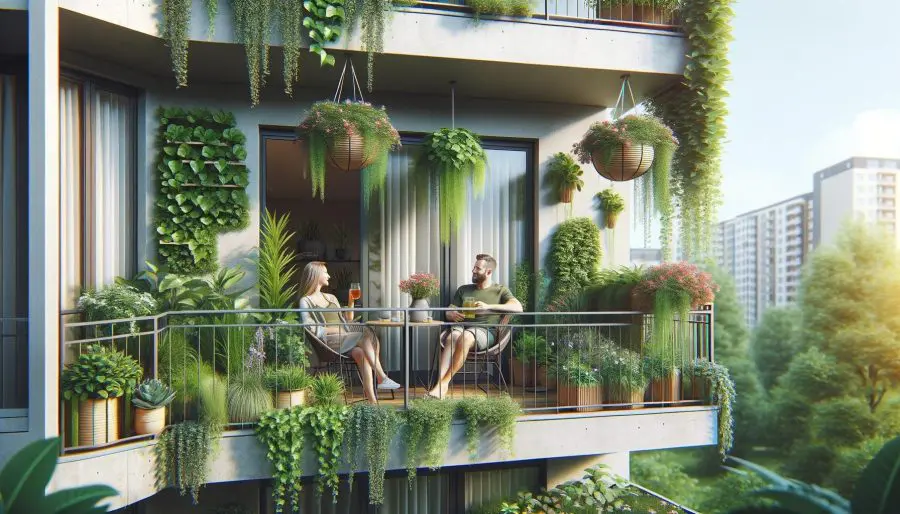
Balcony gardening is an exciting venture, but it often comes with a host of questions, especially for beginners.
Below are some commonly asked questions and their answers to help you navigate the world of balcony gardening more confidently.
Q: How do I start a balcony garden?
A: Starting a balcony garden begins with understanding your space. Check your building’s gardening policies, assess the strength and size of your balcony, and consider the amount of sunlight it receives.
Choose appropriate containers and plants suitable for these conditions. Start small to understand your balcony’s capabilities and your gardening skills.
Q: What plants are best for a small balcony garden?
A: The best plants for a small balcony garden are those that can thrive in limited space and the specific light conditions of your balcony.
Consider resilient, low-maintenance plants like coneflowers, petunias, and succulents for smaller spaces. Herbs like basil, rosemary, and thyme are also great for their utility and ease of growth.
Q: How can I maximize space in my balcony garden?
A: Maximizing space involves using vertical elements like wall planters, railing planters, and hanging baskets.
Utilize shelving to create additional layers of planting space.
Opt for plants that grow upwards, like climbers and vines, to make the most of limited floor space.
Q: Can I grow vegetables on my balcony?
A: Yes, you can grow vegetables on your balcony, provided you have enough sunlight and space.
Vegetables like cherry tomatoes, lettuce, and peppers are ideal for balcony gardens.
Ensure they’re placed in the sunniest part of your balcony and have adequate room to grow.
Q: How do I manage watering and drainage in a balcony garden?
A: Proper drainage is essential to prevent root rot and overwatering. Ensure your containers have drainage holes and place them on saucers to catch excess water.
Consider self-watering pots to maintain consistent moisture levels. Water plants according to their needs, and be mindful of the microclimate of your balcony.
Q: Are there any special considerations for balcony gardens in windy areas?
A: In windy areas, it’s important to secure your plants and containers. Choose heavier containers or secure lighter ones to railings or walls.
Opt for wind-resistant plants and use windbreaks like trellises or screens to protect delicate plants.
Q: How can I make my balcony garden more sustainable?
A: To make your balcony garden more sustainable, use compost tea for fertilization, recycle and upcycle materials for plant containers, and choose native plants that require less maintenance and water. Also, consider collecting rainwater for irrigation, if possible.
These FAQs should address the primary concerns of anyone new to balcony gardening.
As you delve into this rewarding hobby, you’ll learn more about your specific environment and what works best for you and your plants.
Apartment Balcony Garden Conclusion
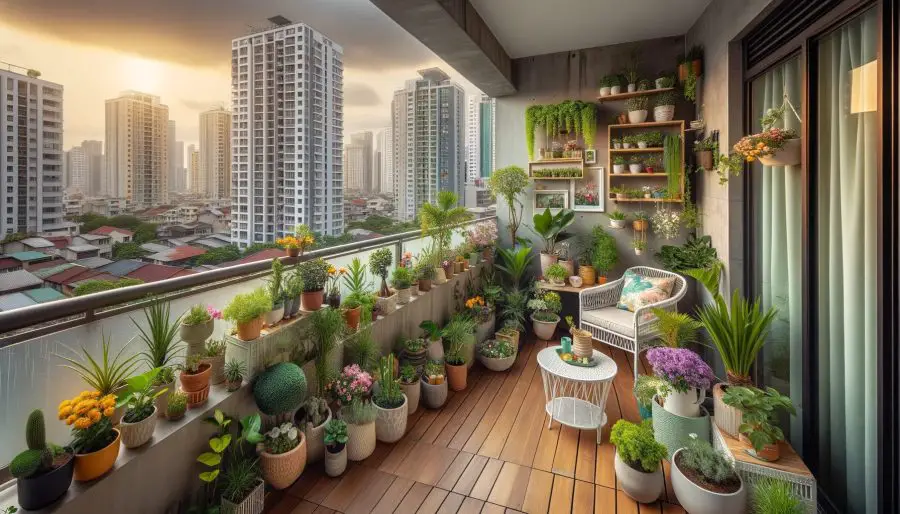
In conclusion, starting an apartment balcony garden is a rewarding venture that enhances your living space, provides a sense of achievement, and contributes to a sustainable lifestyle.
With the right approach, even the smallest balcony can be transformed into a thriving green haven.
Remember to be creative, adaptable, and mindful of your garden’s specific needs.
Whether you’re growing succulents, herbs, or a mix of ornamental and edible plants, your balcony garden is a testament to the beauty and versatility of urban gardening.
Embracing the journey of creating a balcony garden can be one of the most fulfilling aspects of urban living, bringing a piece of nature into your everyday life and transforming your balcony into a thriving green haven.
Here are some of the benefits balcony gardening brings:
Enhancing Your Living Space
- Aesthetic Appeal: Your balcony garden adds beauty and charm to your home, creating a visually pleasing environment.
- Personal Sanctuary: It becomes a personal retreat where you can relax, unwind, and enjoy the tranquility of nature.
Sense of Achievement
- Growth and Learning: Watching your garden grow and flourish provides a deep sense of satisfaction and accomplishment.
- Skill Development: Balcony gardening helps you develop new skills and knowledge about plant care and eco-friendly practices.
Contribution to Sustainability
- Eco-Friendly Practices: By engaging in sustainable gardening practices, such as composting and using eco-friendly materials, you contribute positively to the environment.
- Promoting Biodiversity: Your balcony garden can support local wildlife, such as pollinators, enhancing urban biodiversity.
Personalization and Creativity
- Creative Outlet: Gardening allows you to express your creativity through plant choices, container designs, and overall garden layout.
- Customization: Tailor your garden to fit your personal tastes, whether you prefer a serene green space or a vibrant array of flowers.
Adaptability and Mindfulness
- Adapt to Challenges: Learn to adapt to the unique challenges of balcony gardening, finding solutions that work for your specific environment.
- Mindful Gardening: Pay attention to the needs of your plants, the changes in the environment, and the rhythms of the seasons.
The Versatility of Urban Gardening
- Diverse Plant Choices: Your balcony garden can host a variety of plants, from decorative to functional, showcasing the versatility of urban gardening.
- Small Space, Big Impact: Even the smallest balcony can be transformed into a productive and delightful garden space.
Remember to be creative, adaptable, and mindful of your garden’s specific needs.
Whether you’re growing succulents, herbs, or a mix of ornamental and edible plants, your balcony garden is a testament to the beauty, resilience, and versatility of urban gardening.
It not only enriches your living space but also adds to the quality of urban life, making it greener, more sustainable, and more enjoyable.
Good luck with your apartment balcony garden and happy gardening!


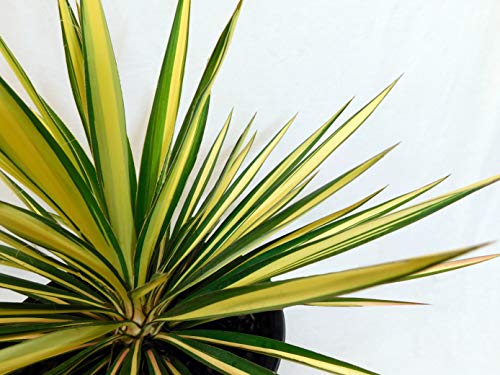
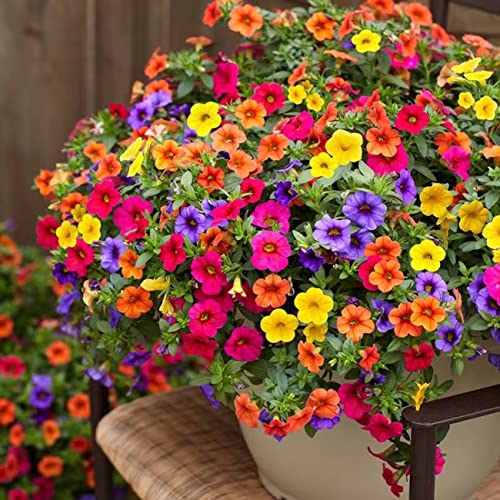










![[2 PCS] Light Iridescent Rainbow Gradient Color Clear Glass Self-Watering System Spikes, Aqua Globes Automatic Plant Waterer Bulbs [2 PCS] Light Iridescent Rainbow Gradient Color Clear Glass Self-Watering System Spikes, Aqua Globes Automatic Plant Waterer Bulbs](https://m.media-amazon.com/images/I/51WejTsTSVL._SL500_.jpg)





